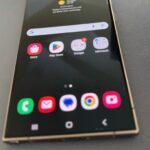Apple Watch Acts as Lifesaver: Woman Discovers Life-Threatening Leukemia Diagnosis Thanks to Alerts

In the modern era, smartwatches have evolved significantly, transitioning from simple time-telling devices to sophisticated health-monitoring tools. These wrist-worn gadgets now play a crucial role in tracking various health metrics, from heart rate to sleep patterns, helping users stay more attuned to their physical well-being.
The Transformative Power of Smartwatches
Amanda Faulkner, a consultant psychiatrist from New Zealand, experienced firsthand how these devices could impact life and health. This past summer, she noticed that she was unusually fatigued and felt overheated, attributing her symptoms to the warm weather or possibly perimenopause. With a busy schedule managing over 60 patients, she brushed off her discomfort. However, her new Apple Watch continually signaled an alarming change: her resting heart rate had surged from a typical 55 beats per minute to the 90s.
-
AI Security Flaw Exposes Gmail Data via Invisible Prompts Before Patch

-
YouTube Launches AI Likeness Detection to Combat Deepfake Videos

-
How to Effortlessly Delete Multiple Emails on Your Android Device

-
Beware of Fake Invitation Emails: How Cybercriminals Are Targeting Your Inbox with Deceptive Tactics

Initially skeptical of the watch’s accuracy, Amanda considered herself fit and active, having recently enjoyed a hiking trip. Yet, the persistent alerts prompted her to consult her general practitioner, a decision that ultimately proved life-saving.
A Shocking Diagnosis
After undergoing tests, Amanda received a shocking diagnosis: acute myeloid leukemia, a rare and aggressive form of blood cancer. Doctors informed her that had she waited just 48 more hours, her condition could have been fatal. This experience underscores the potential of wearable technology as a proactive health monitoring system rather than a substitute for professional medical advice.
The Role of Smartwatches in Health Monitoring
Amanda’s story highlights the importance of being alert to changes in our bodies and the role technology can play in that awareness. Apple has emphasized that its heart monitoring features are not intended to replace medical professionals but to serve as valuable tools that encourage users to seek medical attention when necessary. Elevated heart rates can indicate various health issues, ranging from infections to allergic reactions, and early detection can be critical.
Impact on Community and Conversations
Amanda’s experience has sparked broader conversations about health and technology. Her husband, Mike, shared that their story has inspired many friends and family members to address their health concerns or invest in an Apple Watch themselves. Strangers even visited Amanda in the hospital to share their cancer journeys, reinforcing the idea that technology can foster community and support during difficult times.
Lessons in Health Advocacy
Currently undergoing treatment that includes chemotherapy and an upcoming stem cell transplant, Amanda remains optimistic and grateful for the smartwatch that alerted her to her condition. She encourages others, especially women whose symptoms are often overlooked, to trust their instincts and advocate for their health.
Understanding Limitations of Wearable Technology
Despite the benefits of smartwatches, it’s essential to recognize their limitations. These devices are not medical-grade instruments and may produce false positives or overlook critical health issues. Relying solely on smartwatch data could lead to unnecessary anxiety or false reassurance. Individual responses to the device can vary, influenced by factors such as skin tone, movement, or placement of the device. Additionally, privacy and data security are significant concerns, as sensitive health information is transmitted and stored digitally. Smartwatches should be viewed as supplementary tools that encourage users to seek professional medical advice rather than as definitive diagnostic devices.
The Future of Health Monitoring
Smartwatches have transcended being mere tech accessories, evolving into vital health companions. While they cannot replace professional medical guidance, their capability to continuously monitor vital signs and alert users to potential health issues is transforming health management. Amanda Faulkner’s experience serves as a poignant reminder that sometimes the smallest devices can have the most significant impact, potentially saving lives by catching early warning signs.
Have you experienced a situation where a wearable device alerted you to a health concern? We invite you to share your story with us and let us know how technology has influenced your health management.
For more tech tips and security alerts, consider subscribing to our free newsletter for the latest updates. Your health matters, and staying informed is a crucial step in taking charge of it.
